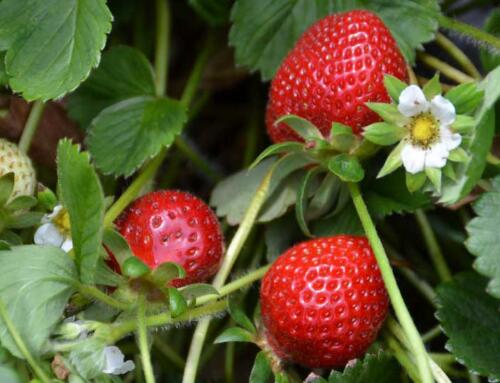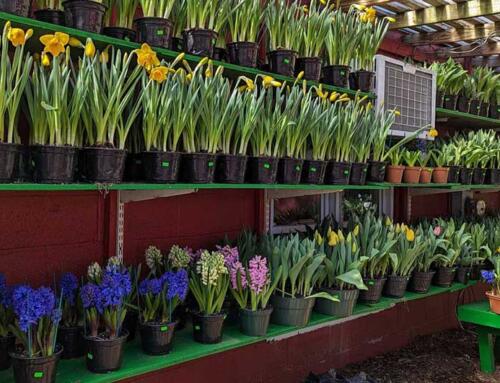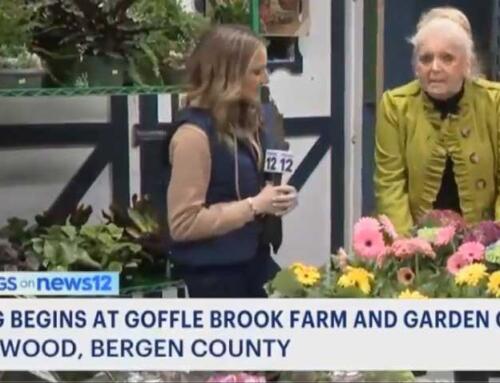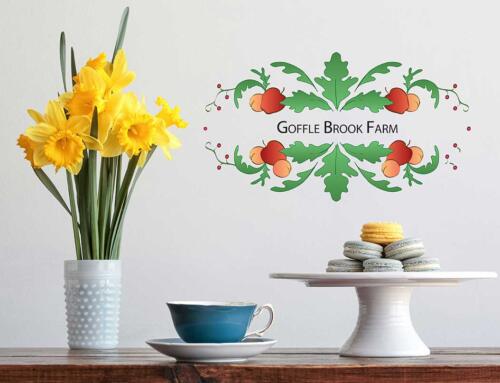HOSTAS – THE WORKHORSE OF THE GARDEN
Hostas – a great perrenial for any garden in the shade. Hostas are great plants for adding texture to any garden and come in a variety of greens, blues, purples, and some variations will have white, yellow stripes. And with so many different sizes of hostas (over 2500!) there is sure to be a spot in your garden for this workhorse of a plant.
Planting Hostas
While some hostas do thrive in the shade, some hostas require less shade than others. It depends on the color of hosta, but green, purple, and blue hostas will require about 4 hours of sun. Yellow and light green hostas will only require about 3 hours of morning sun, and it will help bring out the stripes of the plant even more. If your hostas become brown on the edges, you may just need to give it more or less shade. The best time to plant 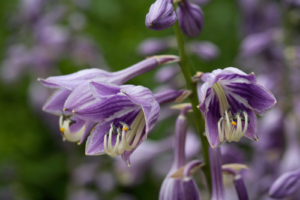 hostas is in the early spring and to plant them bare root to protect from any soil borne disease. You should water them once a week, giving an even distribution of about 1 inch deep water on the hosta’s soil. If your hosta is under cover and won’t receive rain, you will need to water based on your hosta’s condition. Brown edges can also indicate that the plant needs more water.
hostas is in the early spring and to plant them bare root to protect from any soil borne disease. You should water them once a week, giving an even distribution of about 1 inch deep water on the hosta’s soil. If your hosta is under cover and won’t receive rain, you will need to water based on your hosta’s condition. Brown edges can also indicate that the plant needs more water.
Your hostas should be planted in an organic soil with a slightly acidic pH level. Hostas will do great in moist soils, so you should pay close attention and make sure to keep them watered. Once the weather begins to warm up in the summer, you should add organic mulch on top of the soil to help your plant even more. Mulch will help with weeds and will eventually give nutrients to the soil below.
You can also apply any basic garden fertilizer to your hosta, as well as missing nutrients if you test your soils nutrients at any point. You should always pay close attention to the fertilizer instructions, but typically you apply it twice during the season: in spring as leaves emerge from the ground and once the hosta flowers. Cease fertilization in late July, as the fertilizer can interfere with the hosta’s survivability in the winter.
Pests
There are of course also pesky pests that will go after your hostas. Typically deer and slugs will be a problem for hostas. You can stop them from getting your hostas by sprinkling some sand around your hostas for the slugs, and by planting daffodils around the hostas to stop deer from tearing into them. Also make sure to keep weeds plucked around the plant as the weeds will compete for nutrients and water and keep your hosta from thriving.
Goffle Brook Farms in Ridgewood, N.J. carries a diverse selection of hostas and perennials. We also carry soils, amendments and a large selection of fertilizers and gardening supplies. Stop in today and see for yourself what your neighbors already know.


